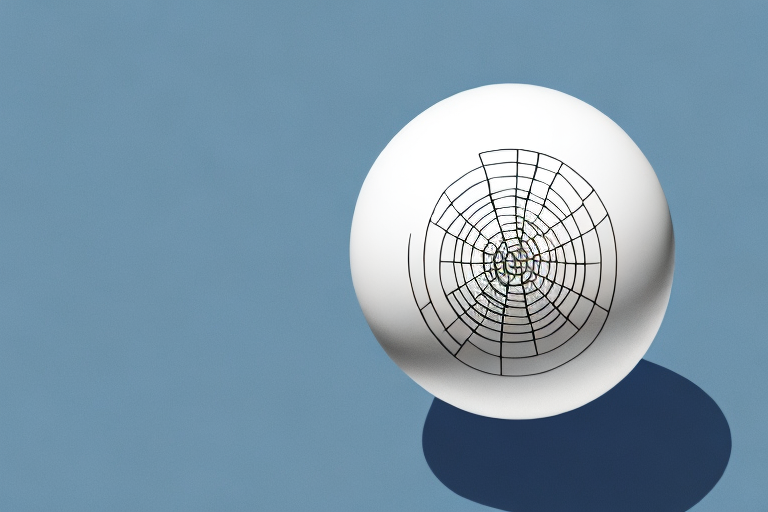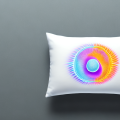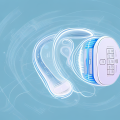Suboccipital muscle tension can be a challenge to deal with. If you have experienced it before, you know the discomfort and frustration it can cause. Often, this muscle tension is accompanied by headaches, neck pain, and even shoulder pain. Fortunately, using a trigger point massage ball can help to alleviate this problem.
Understanding Suboccipital Muscle Tension and Its Causes
The suboccipital muscles are a group of small muscles located at the base of the skull. They play an essential role in controlling head posture and movement. Unfortunately, they can become tense and overactive when we sit or stand for long periods with poor posture. A sedentary lifestyle, stress, and prolonged computer use can also contribute to the tension in these muscles.
In addition to these causes, suboccipital muscle tension can also be a result of injury or trauma to the head or neck. Whiplash, for example, can cause these muscles to become strained and tense. It is important to address suboccipital muscle tension as it can lead to headaches, neck pain, and even vision problems. Stretching, massage, and proper posture can all help alleviate tension in these muscles.
How Trigger Point Massage Balls Work to Release Muscle Tension
A trigger point massage ball is a small, dense ball that can be used to apply direct pressure to the suboccipital muscles. This pressure helps to relax the muscles, increase blood flow, and reduce inflammation. Trigger point massage balls can also stimulate the release of endorphins, which are natural painkillers produced by the body.
In addition to their physical benefits, trigger point massage balls can also have a positive impact on mental health. The act of using the ball to apply pressure to specific points on the body can be a form of mindfulness meditation, helping to reduce stress and anxiety. This can lead to an overall sense of relaxation and well-being.
Finding the Right Type of Trigger Point Massage Ball for You
When shopping for a trigger point massage ball, it’s important to consider the size, shape, and density of the ball. Some massage balls are made of foam, while others are made of plastic or rubber. The best type of ball for you will depend on your preferences and level of comfort. It’s also essential to choose a ball that is appropriate for the intensity of pressure you need.
Additionally, it’s important to consider the specific areas of your body that you will be targeting with the massage ball. If you plan to use the ball on smaller, more precise areas such as the feet or hands, a smaller ball may be more effective. However, if you plan to use the ball on larger muscle groups such as the back or legs, a larger ball may be more suitable. It’s also important to note that some massage balls come with additional features such as spikes or ridges, which can provide a deeper massage and target specific trigger points more effectively.
Preparing for a Trigger Point Massage Session with a Ball
Before starting a trigger point massage session, it’s important to warm up your muscles. You can stretch your neck and shoulders or use a warm compress to help loosen up the muscles. It’s also crucial to find a comfortable position that allows you to apply pressure to the target area without causing discomfort in other parts of your body.
In addition to warming up your muscles and finding a comfortable position, it’s important to choose the right type of ball for your trigger point massage session. A tennis ball or lacrosse ball can be effective, but if you have a particularly sensitive area, a softer ball like a foam roller ball may be more appropriate. It’s also important to start with gentle pressure and gradually increase as your muscles become more relaxed.
Step-by-Step Guide to Using a Trigger Point Massage Ball on Suboccipital Muscles
To use a trigger point massage ball on your suboccipital muscles, place the ball on the floor or against a wall. Then, position the ball under the base of your skull, where the suboccipital muscles are located. Slowly lean back against the ball, applying as much pressure as you are comfortable with. Hold the pressure for 30 seconds or more, then move the ball to another point and repeat the process.
It is important to note that using a trigger point massage ball on your suboccipital muscles can help alleviate tension headaches and improve overall neck mobility. However, it is recommended to start with light pressure and gradually increase as your muscles become more accustomed to the massage. It is also important to avoid using the ball directly on the spine or any bony protrusions. If you experience any pain or discomfort, stop immediately and consult with a healthcare professional.
Common Mistakes to Avoid When Using a Trigger Point Massage Ball
When using a trigger point massage ball, it’s crucial to avoid some common mistakes. Firstly, you should never apply too much pressure or force when using the ball. Secondly, ensure that you are not rolling the ball around, but instead, holding it in one place to apply pressure directly. Lastly, avoid using the ball for too long, as this can lead to muscle soreness and fatigue.
Another common mistake to avoid when using a trigger point massage ball is using it on areas with injuries or inflammation. The ball can aggravate the injury and cause further damage. It’s important to consult with a healthcare professional before using the ball if you have any injuries or medical conditions. Additionally, make sure to clean the ball regularly to prevent the buildup of bacteria and germs.
Combining Trigger Point Massage Ball Techniques with Other Self-Care Methods for Optimal Relief
Using a trigger point massage ball can be highly effective, but it’s also essential to combine it with other self-care techniques for optimal relief. Stretching and exercise can help to strengthen the muscles and increase their flexibility. You should also take breaks, change positions frequently when sitting for long periods and use ergonomic equipment, like a desk chair or a monitor stand to reduce neck strain and tension.
In addition to stretching and exercise, incorporating relaxation techniques such as deep breathing, meditation, or yoga can also help to reduce stress and tension in the body. It’s important to listen to your body and take breaks when needed, especially if you’re experiencing pain or discomfort. Additionally, staying hydrated and maintaining a healthy diet can also contribute to overall muscle health and reduce the likelihood of trigger points forming.
When to Seek Professional Help for Suboccipital Muscle Tension
If you experience severe or persistent suboccipital muscle tension or pain, it’s important to seek professional help. A physiotherapist or chiropractor can provide a comprehensive assessment and recommend appropriate treatment. Occasionally, people also need prescription drugs such as muscle relaxants or nerve pain medication.
Long-Term Strategies for Managing Suboccipital Muscle Tension with Trigger Point Massage Balls
Trigger point massage balls can provide immediate relief from suboccipital muscle tension, but long-term strategies are essential for preventing future problems. Maintaining proper posture, taking frequent breaks from sitting, and engaging in regular exercise can all help to reduce tension in the suboccipital muscles. Regular self-massage sessions with a trigger point massage ball can also help to further diminish muscle tension.
Using a trigger point massage ball is an effective way to release tension in your suboccipital muscles. By following the steps outlined above and maintaining a regular self-massage routine, you can find relief from neck and shoulder pain, and ultimately reduce the risk of future muscle tension.





